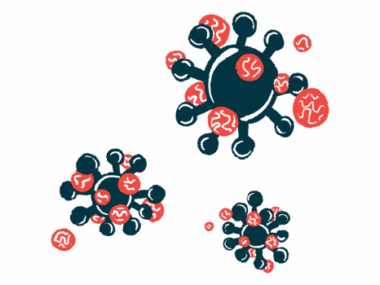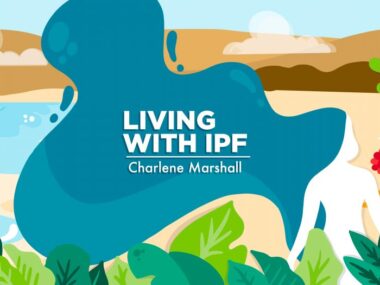Autoantibody Reduction Regimen Improves Lungs, Survival: Study
Written by |

An autoantibody reduction regimen that combines three treatments improved lung function and survival in adults with idiopathic pulmonary fibrosis (IPF) who are experiencing acute symptom worsening, a small study suggests.
Early, positive clinical responses predicted better long-term outcomes, and high levels of autoantibodies against epithelial markers before treatment were significantly associated with improved survival. The epithelium comprises one or more layers of cells that line most internal and external surfaces of the body and its organs, including the lungs.
These findings support previous evidence showing that IPF patients with acute exacerbations, or sudden bouts of symptom worsening, have “excessive autoantibody levels in blood and lungs that might make their disease worse,” Steve Duncan, MD, the study’s senior author, said in a press release.
Duncan is a principal investigator and professor at the University of Alabama at Birmingham (UAB)’s Marnix E. Heersink School of Medicine.
Appropriately controlled clinical trials are needed to confirm the benefits of such a treatment regimen in this patient population and to better understand the link between high levels of anti-epithelial autoantibodies and better outcomes, the researchers noted.
“Understanding this further may help identify patients who are most likely to benefit from these treatments and optimize the utilization of this treatment protocol,” said Tejaswini Kulkarni, MD, the study’s first author and an assistant professor at the Marnix E. Heersink School of Medicine.
The UAB is sponsoring a Phase 2 trial, called STRIVE-IPF (NCT03286556), testing this autoantibody reduction regimen in up to 51 IPF patients with acute exacerbations. The study may still be recruiting participants ages 40 to 85 at six U.S. sites; more information can be found here.
The study, “Correlates of survival after autoantibody reduction therapy for acute IPF exacerbations,” was published in the journal PLOS One.
Acute IPF exacerbations, characterized by rapid lung function worsening that can lead to respiratory failure within days, affect about 5–10% of IPF patients every year and account for about half of all deaths among these patients. Their cause remains unclear, and “no medical therapy yet tried has proven efficacy,” the researchers wrote.
Increasing evidence suggests that autoantibodies may play a role in acute IPF exacerbations.
Antibodies are proteins naturally produced by B-cells, a type of immune cell, to help fight infections, but immune abnormalities may lead to the production of autoantibodies that wrongly target the body’s own molecules, promoting immune reactions against them.
These self-reactive antibodies are detected in up to 40% of IPF patients and “are especially prominent among [those] who are having, or will soon have, an acute exacerbation,” the researchers wrote.
As such, treatment regimens targeting autoantibodies may have a beneficial impact on IPF exacerbations.
Data from a previous pilot Phase 1/2 trial (NCT01266317), in which Duncan was also involved, showed that a combination of three autoantibody-reducing treatments improved lung function and prolonged the survival of IPF patients with acute exacerbations.
Now, Duncan and his team described the effects of this triple combination treatment in 24 IPF patients who were admitted to the UAB hospital due to acute exacerbations from May 2016 to August 2018.
Researchers also assessed whether clinical and/or autoantibody features were associated with patient survival and showed potential to be used as predictive biomarkers.
Patients, who had a mean age of 70 (70% male), showed no signs of autoimmune diseases, despite the detection of conventional autoantibodies.
The 19-day autoantibody reduction regimen consisted of nine therapeutic plasma exchanges (TPE), two doses of rituximab (a B-cell-depleting therapy), and four intravenous immunoglobulin (IVIG) infusions, in addition to standard treatment with steroid and antibiotic therapies.
By replacing a patient’s blood with that from a donor, TPE allows the clearance of autoantibodies from a patient’s bloodstream, while IVIG delivers harmless antibodies that promote a regulatory mechanism that suppresses overall antibody production.
Patients accepted to receive this regimen knowing it was not a standard approach, as well as its potential risks and unproven benefits.
The presence of self-reactive antibodies against epithelial markers and HSP70 — which have been previously linked to IPF symptoms and outcomes — at the beginning of treatment was evaluated in blood samples from 22 patients.
Results showed that 67% of the patients were alive at one month, 63% at three months, 46% at six months, and 42% at one year after treatment initiation.
Overall survival was significantly higher among the 18 patients (75%) who showed favorable responses to the therapy, including a reduction in supplemental oxygen needs and/or increased walking distances. Two of these patients died early due to cardiovascular causes (i.e. infarct, stroke) unrelated to IPF.
All 10 patients who survived for at least one year showed positive responses early during the regimen, suggesting that early responses are a favorable prognostic marker.
The six patients (25%) who did not respond to the treatment and instead needed increasing oxygen supplementation throughout their hospitalizations died from respiratory failure at a mean of 12 days after treatment initiation.
Two responders experienced an acute exacerbation of unknown cause within three weeks after treatment was completed. One chose to receive a shorter regimen (five TPE plus four IVIG) and showed signs of improved lung function, surviving for four more months. The other patient, who declined re-treatment, died from progressive respiratory failure within one week.
In addition, blood levels of anti-epithelial autoantibodies were significantly higher (by threefold) among one-year survivors, relative to nonsurvivors. A total of 10 out of 12 patients (83%) with low levels of these autoantibodies died within a year.
While there was a significant link between blood levels of anti-epithelial and anti-HSP70 autoantibodies, “there were no apparent associations of anti-HSP70 concentrations and survival,” the researchers wrote.
“Patients who responded to this treatment protocol had higher pre-treatment levels of [anti-epithelial autoantibodies],” Kulkarni said.
Initial clinical features and the use of anti-scarring medications — including Ofev (nintedanib) and Esbriet (pirfenidone) — were not significantly different between one-year survivors and nonsurvivors.
“Since adoption of this multi-modality regimen we now observe clinical improvements in more than half ” of the IPF patients with acute exacerbations, the researchers wrote.
However, “unequivocal proof of its efficacy will await results of randomized clinical trials (RCT) with concurrent controls,” such as the STRIVE-IPF study, they added.
Additional trials “could further refine and optimize autoantibody reduction regimens, validate measures to facilitate the personalized applications of these treatments, and potentially illuminate other important upstream disease mechanisms aside from or in addition to [antibody-based] autoimmunity,” Duncan said.








